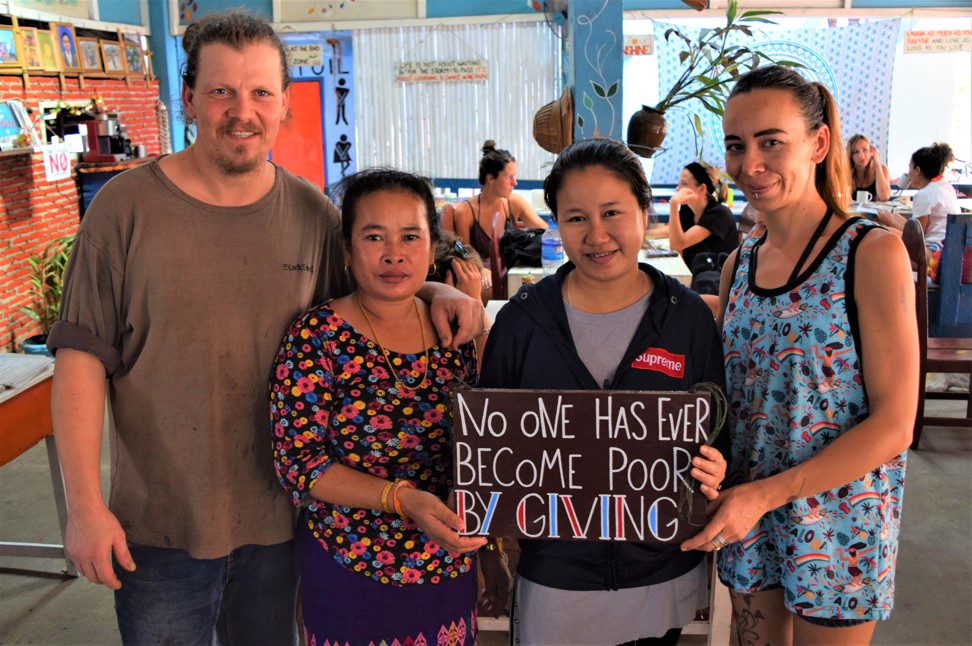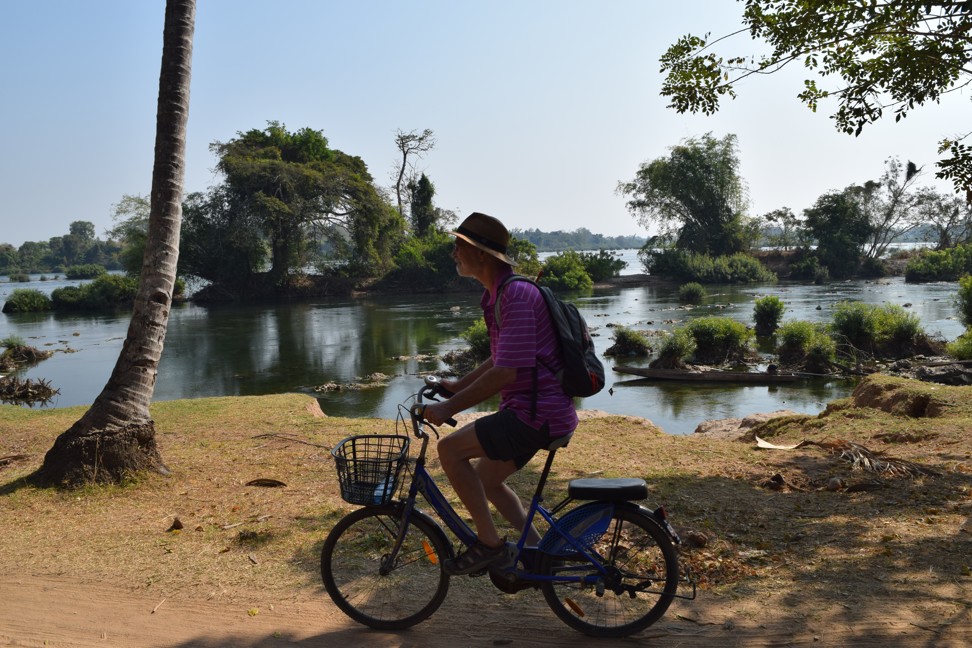
Laos’ Four Thousand Islands – a remote backpacker idyll that is as unspoilt as 1960s Thailand, for now
- The Mekong river archipelago is all about kicking back in a hammock and finding your inner hippie
- Often, people visit on their way somewhere else, only to find Si Phan Don was what they were looking for all along
“Life isn’t about waiting for the storm to pass,” proclaims a gaily painted sign to arriving guests treading barefoot across creaking wooden floorboards at the popular and exceptionally chilled-out Mama Tanon Guesthouse. “It’s about learning to dance in the rain.”
No sooner has that slightly disturbing imagery sunk in than you are bombarded with more life lessons. “The earth has music for those who listen,” reads one sign. “Travelling leaves you speechless, then turns you into a storyteller,” declares another. “Let your smile change the world. Don’t let the world change your smile,” advises the next.
It’s a beguiling, bewitching backwater with a sleepy charm guaranteed to bring out your inner hippie; its very name leaves you a little spaced out. Islands in a landlocked country?

In fact, the Four Thousand Islands are an archipelago of mostly tiny, uninhabited river islets in southern Laos, where the Mekong broadens out to 14km, the widest stretch on its 4,350km journey from the Tibetan plateau to the South China Sea.
Islands in the stream, that is what they are. The languid manner in which the Mekong meanders gently around what are often no more than clumps of earth and grass is mirrored by the atmosphere on the two main islands, Don Det and Don Khon, where most travellers wash up in this sleepiest corner of Southeast Asia’s sleepiest country.
There are no cars, few motorbikes, no ATM machines, no pollution, no hustle and bustle. There’s not much to do except slip into a hammock and watch the river keep on rolling from the balconies of cafes and guest houses, which lure customers with billboards unashamedly offering bongs, beer, happy pizzas, weed and mushrooms.
The slightly more energetic can go kayaking, join tubing expeditions – floating downstream in various degrees of inebriation inside a tractor tyre inner tube – or hire bicycles for 10,000 kip (HK$9) a day to ride across a stone bridge between the two islands and past rice paddies, sugar-palm groves and fields of grazing buffalo.
The islands also boast rapids and Southeast Asia’s largest waterfall, Khone Phapheng, imaginatively promoted by tour agents as “the Niagara of the East”. In reality, it’s an impressive but not overwhelming sight, remarkable for its breadth rather than its height. Visitors can also catch sight of endangered Irrawaddy dolphins on boat or kayak trips around one of their last habitats, close to the Cambodian border, although these expeditions don’t always end in success; there are few dolphins left.

For most people, though, the Four Thousand Islands offer an opportunity to chill out on the long and winding roads to or from Cambodia or Vietnam. And the good news is you don’t have to be under 25 to join them.
“People who come here are looking for peaceful island life, and this is the epitome of it,” says Viv Hollywood, 60, from Gravesend, in Britain, who first came to Don Det last year with her husband, Gary, 65, and is back for a second year. Viv and Gary stumbled across the Four Thousand Islands in a way that may sound familiar to fans of Alex Garland’s 1996 book The Beach. They discovered directions, a map and wildly enthusiastic notes scrawled in a dog-eared Lonely Planet guide handed to them by a fellow backpacker.
Having arrived by bus and long boat, the retirees realised they were somewhere special. “You’re in a time-warp,” Gary says. “It’s like being 50 years back in the past. You see kids here playing marbles. You never see anyone arguing.”
The couple booked into a 50,000 kip-a-night guest house a short stroll from the busier bars and restaurants.
“People here say sabai sabai, which means ‘take it easy’,” says Viv. “You come here with a smile and you leave with a smile. It’s totally magical and you just feel the lure to come back.”

Whether it’s something in the air or on the happy pizzas, the mellow atmosphere is remarkable. A manageable and seemingly well-behaved cohort of mostly French and other European travellers lives harmoniously alongside the indigenous population. But will the idyll last?
Cheap drugs combined with the apparent invention of tubing by an enterprising guest house owner with a spare inner tube attracted backpackers in massive numbers, transforming a peaceful village surrounded by jungle and limestone peaks into a hedonistic free-for-all. By 2011, tourists in central Vang Vieng outnumbered locals by 15 to one and that year, the hospital – built in the reasonable expectation of occasional farming accidents – found itself handling 27 tourist deaths, mostly of young people who had drowned or dived headfirst onto rocks.

That traumatic year marked a turning point and the Vang Vieng authorities have since worked hard to weed out the undesirables and reinvent their town as an adventure destination. While the makeover has been largely successful, the resort has a slightly cynical and jaded edge, those riotous years having irreparably stripped it of its innocence. Si Phan Don, by contrast, remains deserving of its comparisons to 1960s and 70s Thailand in a region where unspoilt travel destinations are increasingly hard to find.
There are only so many travellers a conservative rural community can take, however, and it may be only so many banana pancakes away from Phuket- or Koh Samui-style weariness and hostility towards outsiders. Geography may stave off that moment for a while. While Vang Vieng is only a three-hour bus ride from the Laotian capital, Vientiane, it’s a bone-shaking 14 hours on an overnight bus to the Four Thousand Islands – or eight hours by minibus from Siem Reap, in northern Cambodia.
For as long as the magic lasts, the Four Thousand Islands are somewhere people visit on their way to somewhere else, only to find this was what they were looking for all along. In the words of one of the signs on the walls of Mama Tanon’s guest house: “Not all who wander are lost.”

